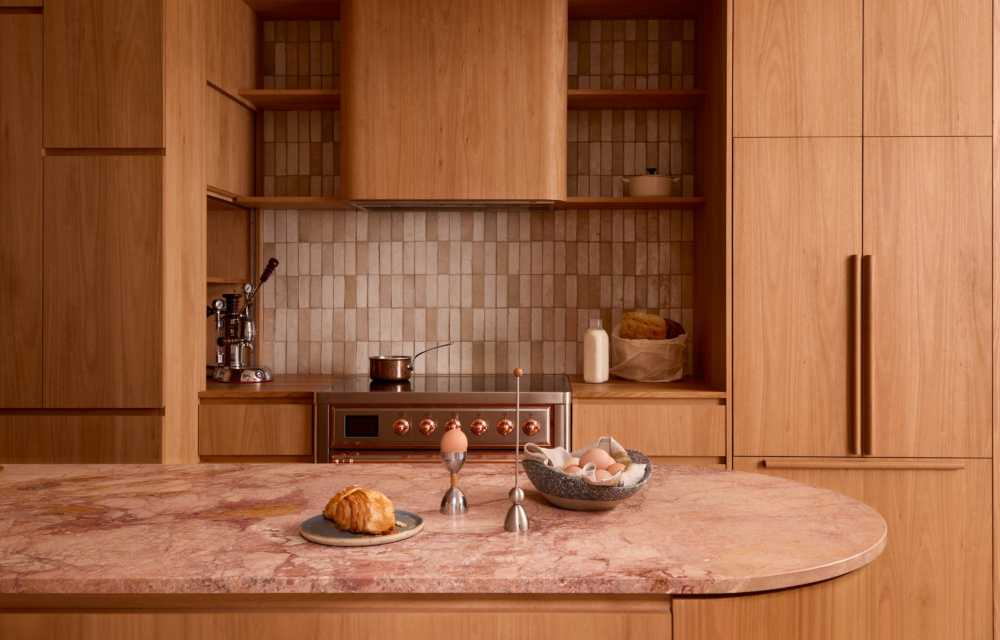Japanese Flair Meets Heritage Character In This Family Terrace
Interiors
Blackbutt and Tasmanian oak veneer on joinery. Tiberio stone benchtop by Artedomus. Handmade Moroccan tiles from Tiles of Ezra.
A step down helps create more depth for the living room to accommodate the family’s beloved sofa.
Baskets from Pan After.
The retreat. Packing Paper sculptural chair by Madeleine Griffith.
The original heritage brick was exposed and bagged.
The glass balustrade for the staircase is reminiscent of shoji screens.
Microcement adds texture to the bathroom walls.
Bespoke brass handrails were selected for future accessibility.
Custom raised soaking tub, rendered in microcement by Alt Surfaces.
The classic facade.
Haiku House is a Victorian terrace inspired by the past, redesigned for the future.
The renovation sought to reinvent the heritage-listed residence as a functional family home for a professional couple with three kids.
But the clients also had a sentimental connection this style of architecture, tied to the nostalgia of having met in a similar three-storey sharehouse back in their twenties — cultivating a spirit of camaraderie they wanted to carry now into their own family home, designer Kim Kneipp says.
‘His priorities centred on openness, light, and integrated technology, while hers focused on quiet retreats, a highly functional kitchen, and stronger indoor–outdoor connection,’ she adds.
‘Together, they wanted a forever home: a home robust enough for pets and children, stylish yet unpretentious and flexible enough to welcome ageing parents in the future.’
Despite its elegant charms, the original 1890s residence required a considerable renovation with major structural works, overseen by Steffen Welsch Architects.
This included extending the ground and first floors, reconfiguring the bedrooms, and relocating the staircase and introducing new windows to the home’s central spine — a transformational change that now floods the central living spaces with natural light.
After these had been resolved, Kim was brought on to balance the home’s existing Victorian character with the client’s love of Japanese interiors.
‘The aim was to create a sense of timelessness: a calm backdrop for the colour and energy of daily family life and one that would carry the home gracefully into the future,’ Kim says.
Shoji screens became a guiding motif, reinterpreted as a glass balustrade along the stair and as wall panels upstairs, concealing the study and bathroom. The main bathroom now reveals an onsen-inspired soaking tub, encased in microcement with slatted cedar ceiling panels.
Timber joinery also helps maximise space across the living areas, where the kitchen island extends into a long dining table, ‘transforming what was once a disjointed floorplan into a central social hub.’
It’s a renovation years in the making, taking a few years to design and another two years to construct. Now, the house not only accommodates all the essentials; the family’s first dog; their oversized indigo sofa; and a gym in the basement; but also captures their light-hearted energy.
‘The name Haiku House emerged during the build itself, when the long and often challenging process was lightened by an exchange of poems between client and designer,’ Kim notes.
‘These haikus distilled moods, materials, and aspirations — a playful ritual that became a reminder that even in complexity there can be creativity, resilience and joy.’

